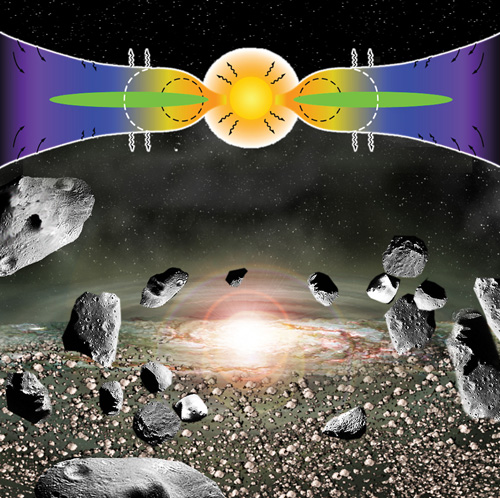
The protosun evolved in a hot nebula of infalling gas and dust that formed an accretion disk (green) of surrounding matter. Visible and ultraviolet light poured from the sun, irradiating abundant clouds of carbon monoxide, hydrogen sulfide, and other chemicals. Temperatures near the sun were hot enough to melt silicates and other minerals, forming the chondrules found in early meteoroids (dashed black circles). Beyond the “snowline” (dashed white curves), water, methane, and other compounds condensed to ice. Numerous chemical reactions contributed to the isotopic ratios seen in relics of the early solar system today. Image credit: Berkeley Lab
(Visited 19 times, 1 visits today)
